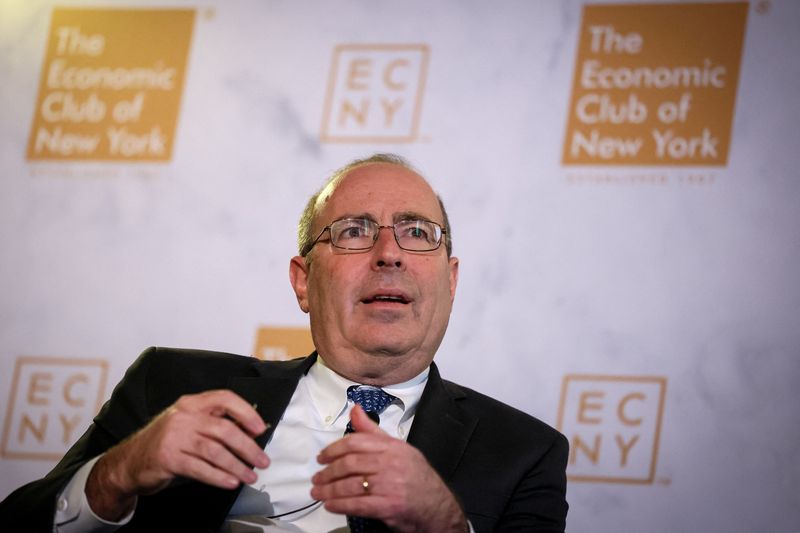By Howard Schneider
WASHINGTON (Reuters) - Inflation data in January, with consumer and wholesale prices rising faster than anticipated, complicate upcoming U.S. central bank interest rate decisions, Richmond Federal Reserve President Thomas Barkin said on Wednesday.
The reports released last week "underline the challenge we have had in the recent data," with a slowdown of inflation dependent on falling goods prices, while shelter and services inflation has remained sticky, Barkin said in an interview with Sirius XM (NASDAQ:SIRI). Though he said he was reluctant to put "too much weight" on January data, in particular because of seasonal measurement issues, "it definitely did not make things easier. It made things harder."
"You do worry that when the goods price deflation cycle ends you are going to be left with shelter and services higher than you like," Barkin said.
The pace of overall consumer price inflation eased in January, to a 3.1% year-over-year pace compared to 3.4% in December. But an underlying "core" measure, stripped of volatile food and energy components, remained unchanged at 3.9%; producer price inflation was also stronger than anticipated over the month, as was job and wage growth.
Those numbers were released after the Fed's Jan. 30-31 meeting at which officials held the benchmark overnight interest rate steady in the 5.25%-5.50% range that was set in July, but also opened the door to rate cuts once they had gained "greater confidence" that inflation was "moving sustainably" back to their 2% target.
Minutes of that meeting, due to be released at 2 p.m. on Wednesday, will be read carefully for further details on what those phrases might mean, and how deeply policymakers may have been split among those ready to cut rates sooner rather than later.
Comments by Fed Chair Jerome Powell after last month's policy meeting all but ruled out a rate cut at the March 19-20 gathering. If there was a constituency for an immediate rate reduction, the minutes of the January meeting would reflect that.
The detailed account of that meeting may also outline the start of a discussion about how and when to end the ongoing drawdown of Fed asset holdings that were increased during the depths of the coronavirus pandemic as a way to keep interest rates anchored at low levels.
Barkin, a voter on interest rate policy this year, did not offer details in his interview on how long he feels the current policy rate may need to remain in place.

While saying he found the last year of falling inflation and continued low unemployment a "remarkable" outcome, he said he also felt it was too early to say that a "soft landing" in which inflation falls without triggering a painful recession and large job losses was assured.
"We still have a ways to go," he said. "We are not on the ground yet."